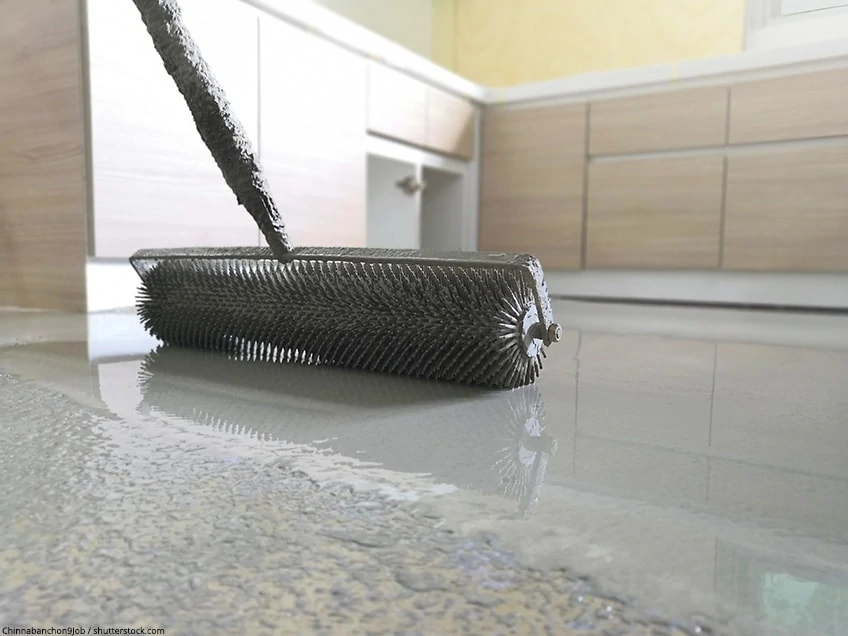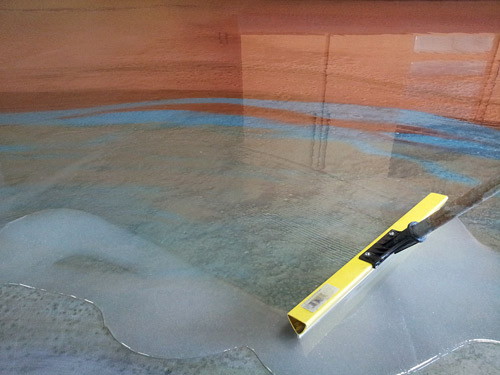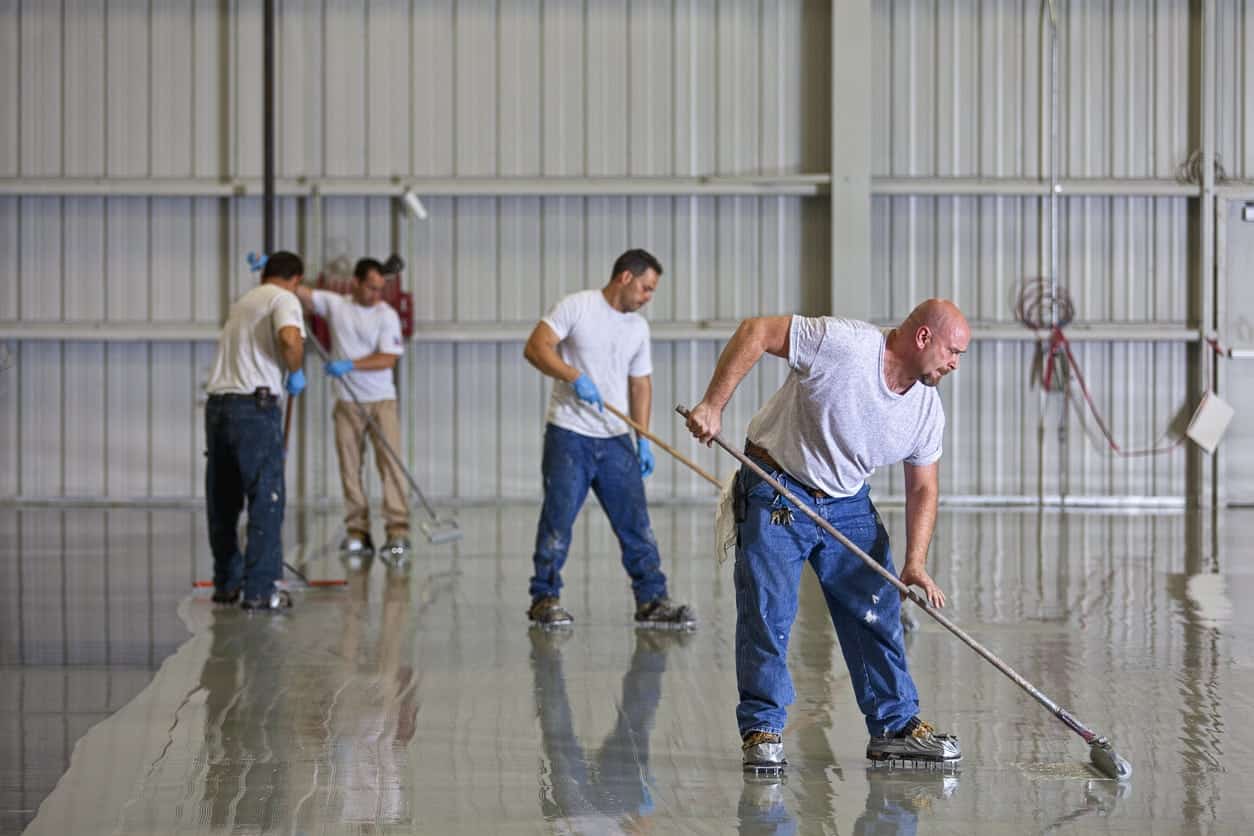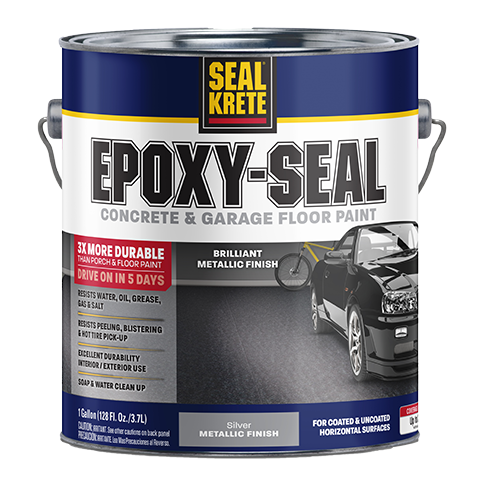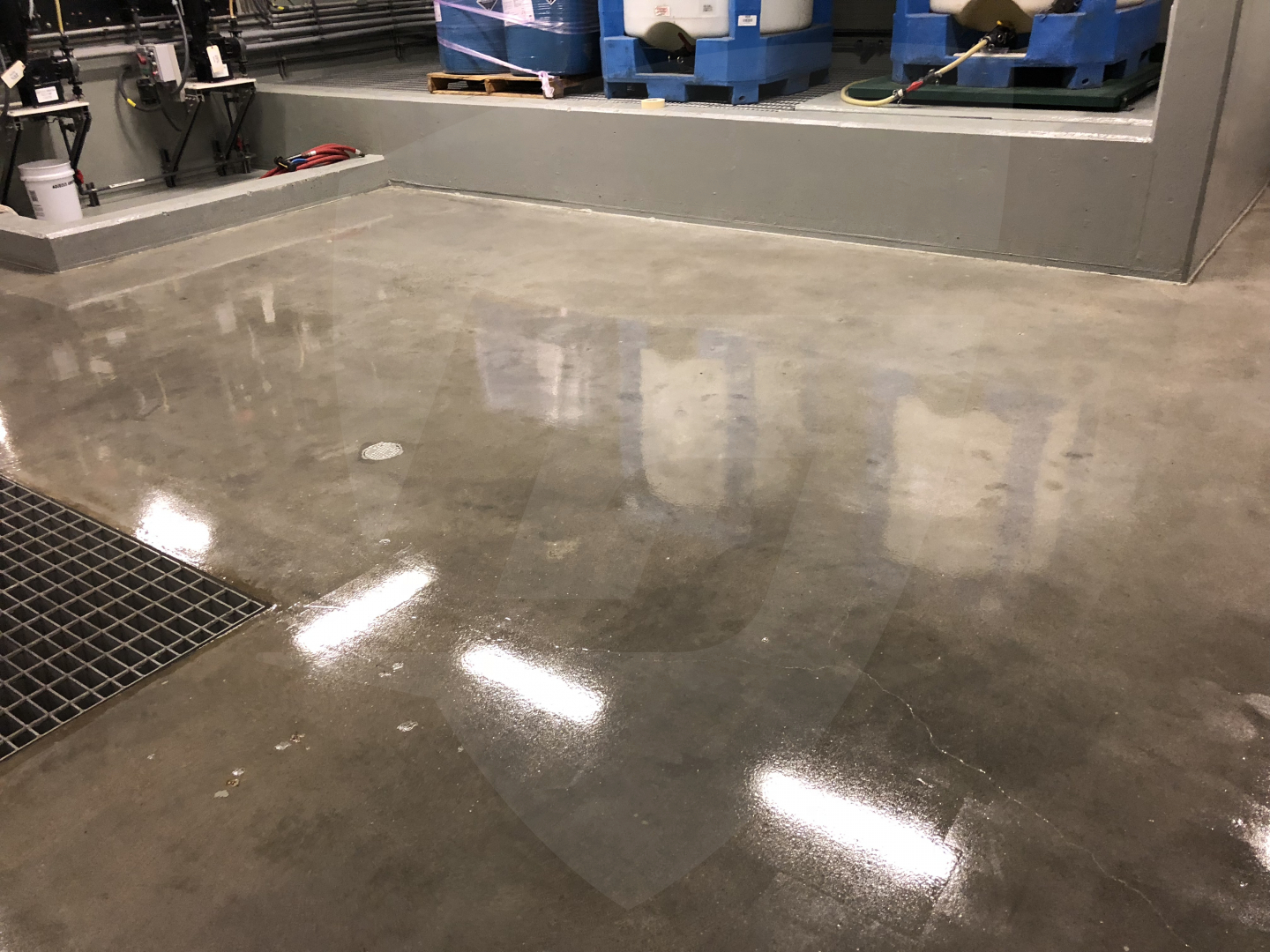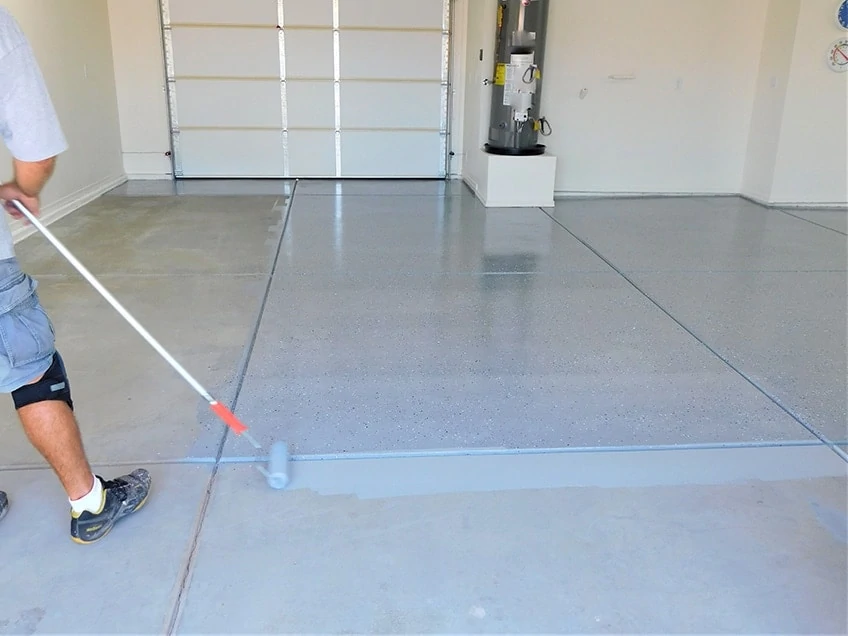Introduction to Epoxy Sealant for Concrete Floors
Epoxy sealant is a popular choice for concrete floor protection and enhancement. With its durable and versatile properties, epoxy sealant offers numerous benefits for both residential and commercial applications. This section will provide an overview of epoxy sealant for concrete floors, discussing its composition, advantages, and various applications.
Composition of Epoxy Sealant
Epoxy sealant is a two-part system consisting of epoxy resin and a hardener. When these two components are mixed together, a chemical reaction occurs, resulting in a strong and rigid material. The epoxy resin acts as the binder, providing adhesion to the concrete surface, while the hardener initiates the curing process, transforming the liquid mixture into a solid and durable epoxy sealant.
Advantages of Epoxy Sealant
One of the key advantages of epoxy sealant is its exceptional durability. Once cured, it forms a tough and resilient coating that can withstand heavy foot traffic, impact, and abrasion. Additionally, epoxy sealant offers excellent resistance against chemicals, such as oil, grease, and solvents, making it suitable for industrial environments. It also provides a seamless and non-porous surface, which prevents the growth of bacteria and facilitates easy cleaning and maintenance. Furthermore, epoxy sealant is available in a wide range of colors and finishes, allowing for customization to match any aesthetic preference.
Applications of Epoxy Sealant for Concrete Floors
Epoxy sealant can be applied to a variety of concrete floor surfaces, making it a versatile solution for many different settings. In residential applications, epoxy sealant is commonly used in garages, basements, and workshops to protect the concrete from damage and improve its appearance. In commercial and industrial settings, such as warehouses, factories, and showrooms, epoxy sealant is often applied to provide a durable and attractive flooring solution. It is also frequently used in healthcare facilities, laboratories, and food processing areas, where hygiene and cleanliness are essential.
Epoxy sealant for concrete floors is a highly beneficial solution that offers durability, resistance to chemicals, and a customizable finish. Its versatility makes it suitable for various applications, both in residential and commercial settings. The following sections will delve further into the application process and maintenance of epoxy sealant, providing a comprehensive guide for those interested in utilizing this effective and aesthetic flooring solution.

Benefits of Using Epoxy Sealant for Concrete Floors
Epoxy sealant is a popular choice for protecting and enhancing concrete floors. It offers a wide range of benefits that make it an ideal option for both residential and commercial spaces. Here are some key advantages of using epoxy sealant for concrete floors:
- Durability: One of the main benefits of epoxy sealant is its exceptional durability. Once applied, it forms a strong bond with the concrete surface, creating a tough and resilient coating. This coating can withstand heavy foot traffic, vehicle traffic, chemical spills, and other potential damages, ensuring the longevity of the concrete floor.
- Resistance to Stains and Chemicals: Epoxy sealant provides excellent resistance against stains and chemicals. It creates a non-porous surface that prevents liquids, oils, and chemicals from penetrating into the concrete. This makes it easier to clean and maintain the floor, as spills can be quickly wiped away without leaving any permanent stains or damage.
- Aesthetic Appeal: Epoxy sealant is available in a variety of colors, patterns, and finishes, allowing you to customize the appearance of your concrete floor. Whether you prefer a glossy, matte, or textured finish, epoxy sealant can transform the look of your floor and enhance the overall aesthetic appeal of your space.
- Safety: Epoxy sealant can significantly improve the safety of concrete floors. It can be applied with slip-resistant additives, providing traction and reducing the risk of slips and falls, especially in areas prone to wet conditions. Additionally, it can improve visibility by reflecting light, making it easier to navigate through the space.
- Cost-effective: In the long run, using epoxy sealant can be a cost-effective option for concrete floors. Its durability and resistance to damage mean that the floor will require less maintenance and repair, saving you time and money. Moreover, its seamless and easy-to-clean surface eliminates the need for additional flooring materials or frequent cleaning products.
- Versatility: Epoxy sealant is highly versatile and can be used on various concrete surfaces, including garage floors, commercial warehouses, showrooms, hospitals, and even residential basements. It can be applied to both old and new concrete, allowing you to transform and protect any concrete floor.
How to Apply Epoxy Sealant on Concrete Floors
Prepare the Surface:
Before applying epoxy sealant on concrete floors, it is crucial to properly prepare the surface. Start by cleaning the floor thoroughly to remove any dirt, dust, or debris. Use a broom or vacuum cleaner to get rid of loose particles, followed by a mop and mild detergent to eliminate stains or grease. Rinse the floor with clean water and allow it to dry completely.
Repair and Patch:
Inspect the concrete floor for any cracks, holes, or uneven areas. These imperfections need to be repaired and patched before applying the epoxy sealant. Use a concrete patching compound and follow the manufacturer’s instructions to fill in the cracks and holes. Smooth out the patched areas with a trowel and let them dry according to the recommended time.
Etch the Surface:
To enhance the adhesion of the epoxy sealant, etching the concrete surface is necessary. This can be done by applying an etching solution, such as muriatic acid or a concrete etching compound, onto the floor. Follow the instructions provided by the manufacturer and make sure to wear protective clothing, gloves, and goggles. Rinse the floor thoroughly with water after the recommended etching time to neutralize the acid or compound.
Apply Primer:
After etching, it is important to apply a primer to the concrete floor. The primer helps in bonding the epoxy sealant to the surface and enhances its durability. Choose a primer specifically designed for epoxy sealants and follow the manufacturer’s instructions for proper application. Use a roller or brush to apply the primer evenly, ensuring that all areas are covered. Allow the primer to dry completely before moving on to the next step.
Mix and Apply Epoxy Sealant:
Prepare the epoxy sealant by following the instructions provided by the manufacturer. Usually, epoxy sealants come in two parts that need to be mixed together. Use a clean bucket and mix the components thoroughly until they are well blended. Once mixed, pour the epoxy sealant onto the floor and use a roller or brush to spread it evenly. Work in small sections to ensure proper coverage. If desired, apply a second coat after the first one has dried according to the manufacturer’s instructions.
Allow Drying and Cure Time:
After applying the epoxy sealant, it is essential to allow sufficient drying and cure time. Follow the manufacturer’s recommendations for the specific product used.
Maintenance Tips for Epoxy Sealed Concrete Floors
Regular Cleaning:
To keep your epoxy sealed concrete floors looking their best, it is important to establish a regular cleaning routine. Sweep or vacuum the floor regularly to remove any loose dirt or debris. Use a soft-bristle broom or a vacuum cleaner with a brush attachment to avoid scratching the surface of the epoxy sealant.
Mopping:
For routine cleaning, a damp mop with mild soap or a pH-neutral cleaner is usually sufficient. Avoid using harsh chemicals or abrasive cleaners that can damage the epoxy sealant. Make sure to rinse the mop frequently and change the water as needed to prevent streaks or residue from being left behind.
Stain Prevention:
While epoxy sealed concrete floors are highly resistant to stains, it is still important to clean up spills promptly to prevent any potential discoloration. Wipe up spills immediately using a soft cloth or paper towel. For tougher stains, a mild detergent or a specialized concrete cleaner can be used, following the manufacturer’s instructions.
Avoiding Scratches:
To prevent scratches on your epoxy sealed concrete floors, it is important to use furniture pads or felt protectors under the legs of your furniture. Avoid dragging heavy objects across the floor, as this can cause scratches or gouges. If you need to move heavy items, use a dolly or a furniture mover to minimize the risk of damage.
Regular Maintenance:
Inspect your epoxy sealed concrete floors regularly for any signs of wear or damage. If you notice any chips, cracks, or areas where the epoxy sealant has worn away, it is recommended to seek professional assistance for repairs. Regular maintenance can help prolong the lifespan of your epoxy sealed concrete floors and keep them looking their best.
Protection from UV Exposure:
Epoxy sealed concrete floors can be vulnerable to UV damage if exposed to direct sunlight for extended periods. To protect your floors from UV exposure, consider installing blinds or curtains to block out the sunlight during the brightest parts of the day. Additionally, applying a UV-resistant coating or using area rugs in areas with high sun exposure can help minimize the risk of discoloration or fading.
Epoxy 325 Durable Concrete Coating u003e Ghostshield®
Comparing Thick-Build Concrete Sealers to Thin-Build Concrete
Best Epoxy Concrete Sealer – Concrete Sealer Reviews
Epoxy-Seal® Concrete and Garage Metallic Floor Paint
All the Top Rated Epoxy Coatings Reviewed by the Pros with 20+
Epoxy 325 Durable Concrete Coating u003e Ghostshield®
Best Epoxy Concrete Sealer – Your Guide for Using Epoxy Sealants
New Garage Floors for $100 dollars Eagle Gloss Sealer
Related Posts:


